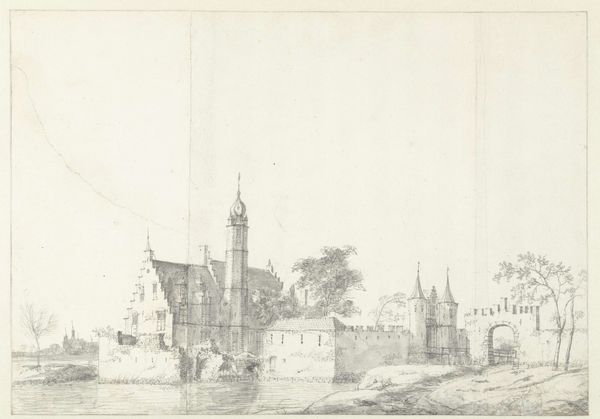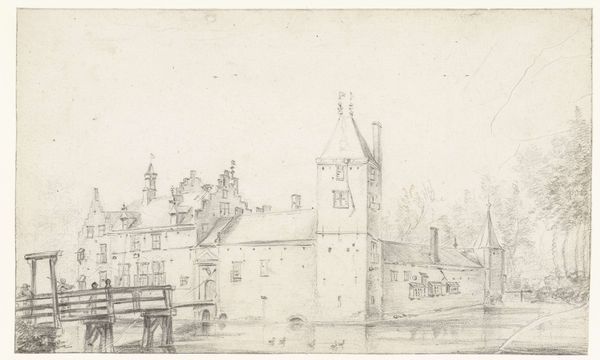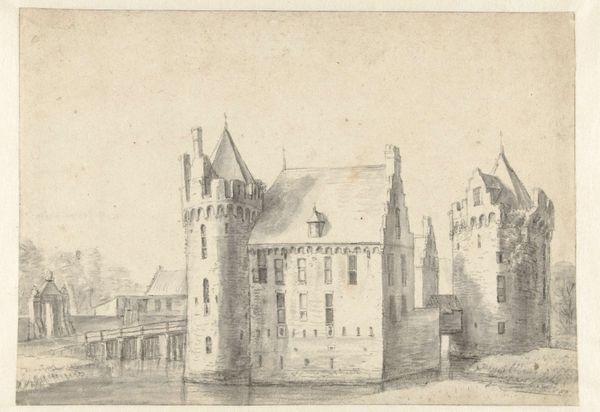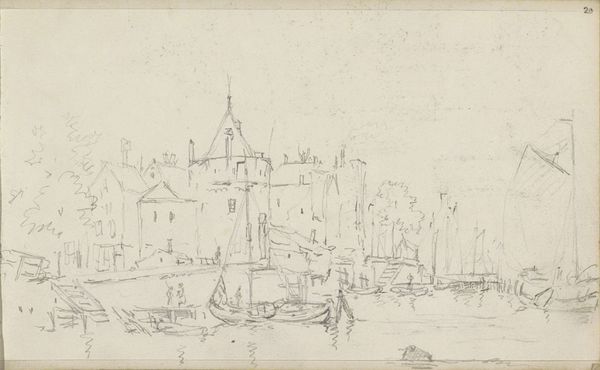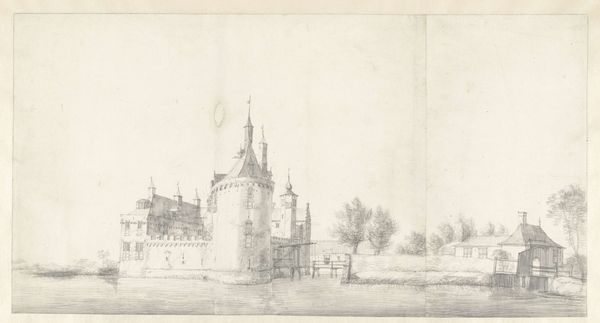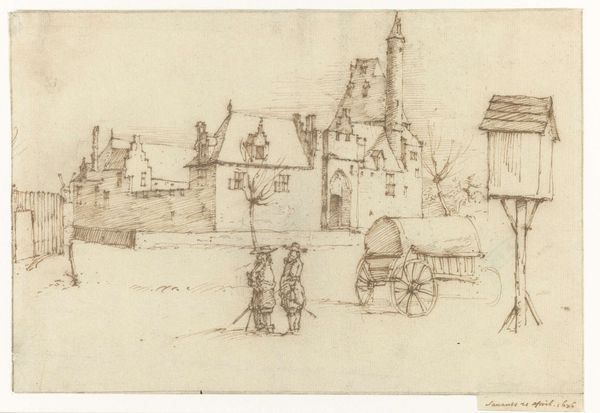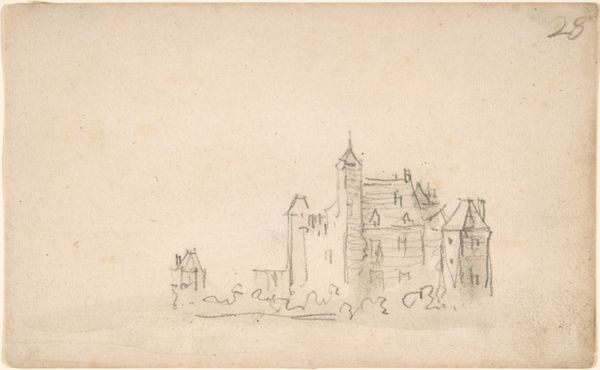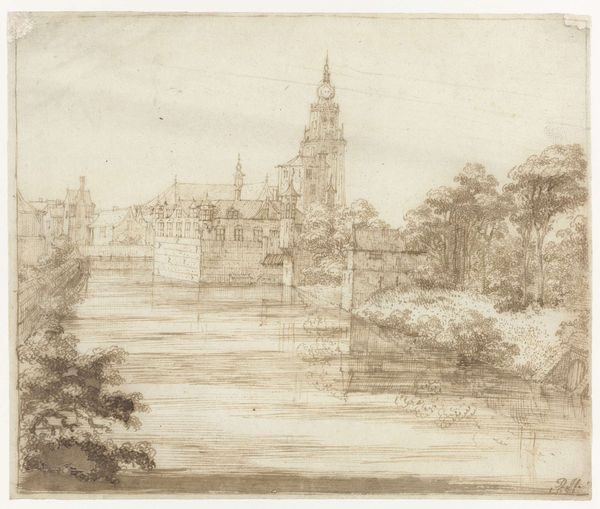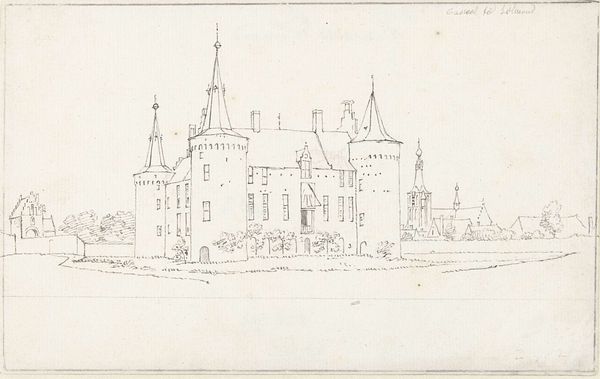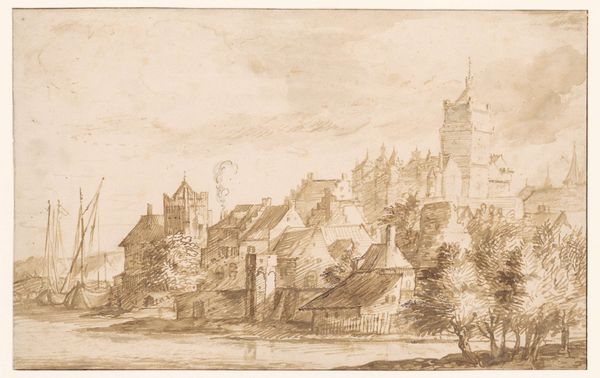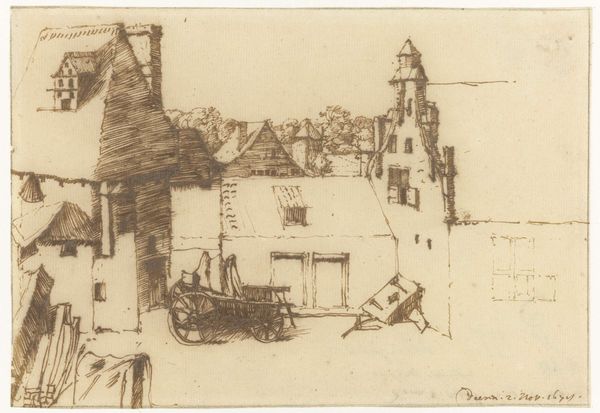
#
architectural sketch
#
landscape illustration sketch
#
aged paper
#
pencil sketch
#
sketch book
#
etching
#
personal sketchbook
#
sketchwork
#
pen-ink sketch
#
sketchbook drawing
Dimensions: height 135 mm, width 190 mm
Copyright: Rijks Museum: Open Domain
Curator: I'm struck by the aged quality of this pen and ink sketch, titled "Grimbergen," possibly dating back to 1676, attributed to Constantijn Huygens II. It's such an evocative piece. Editor: There’s a melancholy to it, isn’t there? The sepia tones and the sketchy quality of the architecture give it a very wistful feeling, as if viewed through memory. Curator: Huygens’ technique speaks to his position within a society wrestling with the representation of power. Castles at this point were often more symbolic than strategically relevant. So what narrative does it evoke? Editor: It’s interesting that you mention power. The castle dominates, of course, but there are also details of everyday life sketched around it— a well, figures conversing, giving equal weight. I wonder if he meant to draw attention to that relationship – a dialectic, between nobility and common life. The power dynamics inherent to the place but subtly undermined by its inhabitants? Curator: Precisely. The deliberate inclusion of those elements could be read as a commentary on the socio-political climate of the time, when these established structures were facing considerable change. These power structures aren't simply monolithic fortresses, but active backdrops for real lives. There's an implied social contract there, however uneven. Editor: The sketch-like nature of the work, the medium of ink itself, might also reinforce that feeling. Pen and ink, the hand of the artist so visible… it suggests a human perspective, and not just a rendering of stone. It speaks of human agency in relation to an intimidating landscape. Curator: Exactly. The piece's value then extends beyond merely architectural documentation. It functions almost as social commentary, wouldn’t you agree? He seems to embed those elements directly into the heart of the structure’s perceived dominance. Editor: It invites us to ponder those enduring social tensions, even now, when we engage with spaces of historical or political import. It certainly lingers in the mind long after viewing. Curator: A sentiment with which I completely agree. I leaves me questioning how the buildings that frame our lives truly influence and dictate them.
Comments
No comments
Be the first to comment and join the conversation on the ultimate creative platform.
